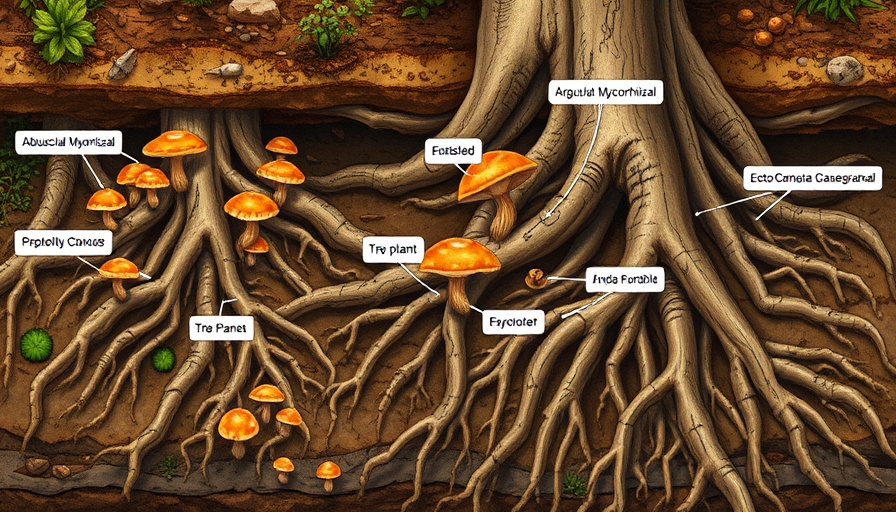
Why Fungi Matter: The Hidden Heroes of Earth's Ecosystems
Mycorrhizal fungi, often referred to as nature's underground network, play an invaluable role in sustaining Earth's ecosystems. These fungi form crucial symbiotic relationships with plant roots, facilitating nutrient exchange and enhancing plant health. Interestingly, according to recent research, a staggering 90% of biodiversity hotspots for these fungi are situated in unprotected ecosystems. This neglect poses a significant threat to our climate, agriculture, and overall biodiversity.
Mapping the Unseen: A Groundbreaking Initiative
The Society for the Protection of Underground Networks (SPUN) recently published a study revealing the extensive biodiversity of underground mycorrhizal communities using advanced mapping techniques. By analyzing over 2.8 billion fungal sequences from around the globe, researchers have created high-resolution biodiversity maps that highlight the urgent need for conservation. Dr. Toby Kiers, SPUN's Executive Director, emphasizes that, "For centuries, we've mapped mountains, forests, and oceans. But these fungi have remained in the dark, despite the extraordinary ways they sustain life on land." This initiative represents a significant step towards integrating fungal conservation into broader environmental strategies.
The Balance of Ecosystems: A Call for Urgent Action
Mycorrhizal fungi do more than just nourish crops; they help to store carbon and regulate climate, sequestering over 13 billion tons of carbon annually. Their disruption could accelerate climate change and further degrade biodiversity, making their protection imperative. Alarmingly, only 9.5% of these fungal biodiversity hotspots are within existing protected areas. With climate and agricultural productivity at stake, it’s time we recognize that protecting mycorrhizal fungi is not just about supporting fungi but ensuring a sustainable future for our planet.
Future Directions: Implementing Fungal Conservation Strategies
As we look at the implications of this research, it’s evident that urgent action is needed. Policymakers must prioritize the inclusion of underground fungi in conservation and climate strategies to protect these essential networks. Strengthening protections in areas identified as biodiversity hotspots could help mitigate climate challenges while boosting agricultural resilience. Moreover, public awareness and community initiatives can enhance local conservation efforts, helping people understand the critical role that fungi play.
In conclusion, as our understanding of underground fungal networks evolves, it’s crucial for us to act. Advocating for policy changes, investing in mapping initiatives, and strengthening conservation efforts are all vital steps we can take to foster ecosystem health and resilience. Let’s work together to ensure that these hidden heroes of the environment receive the protection they urgently need.
 Add Row
Add Row  Add
Add 




Write A Comment